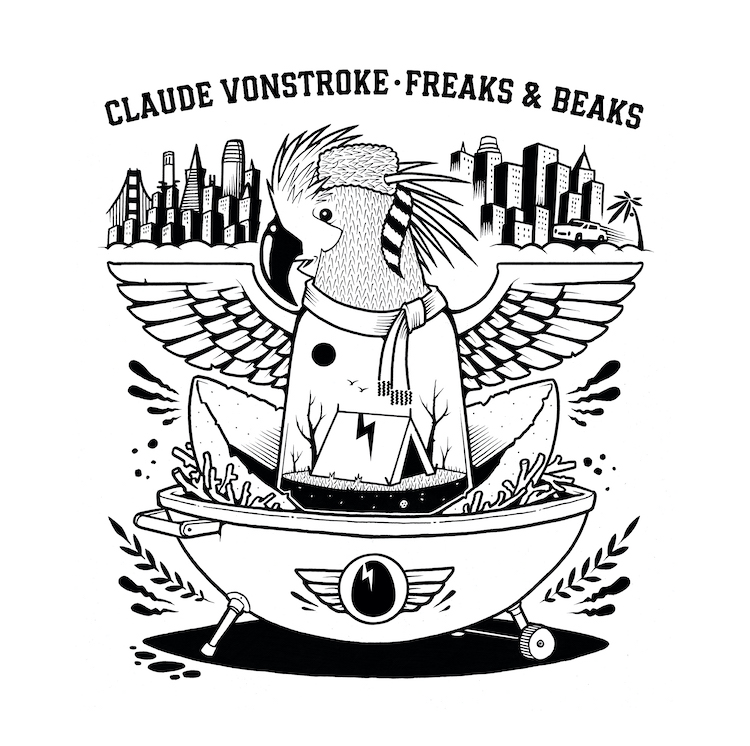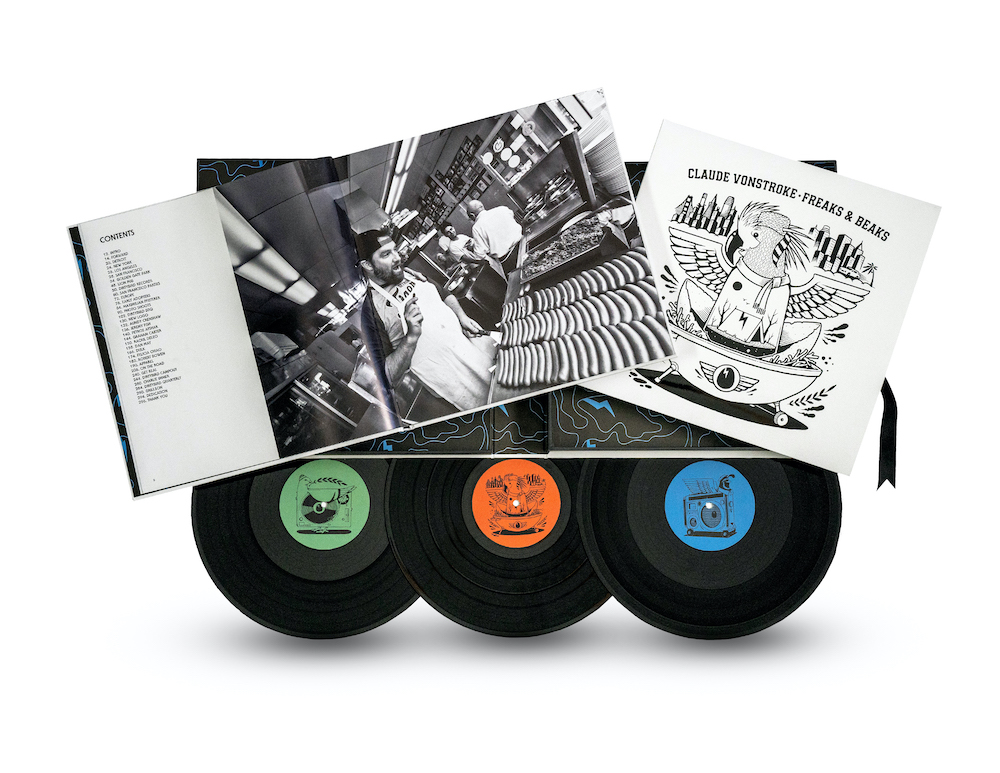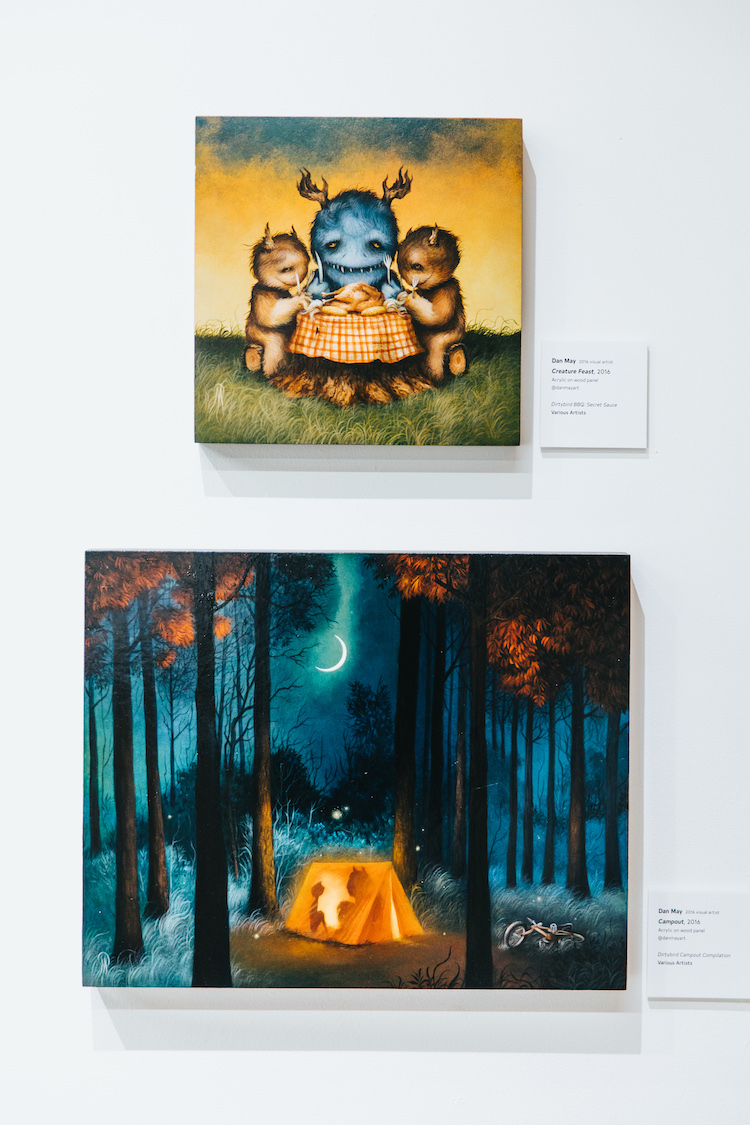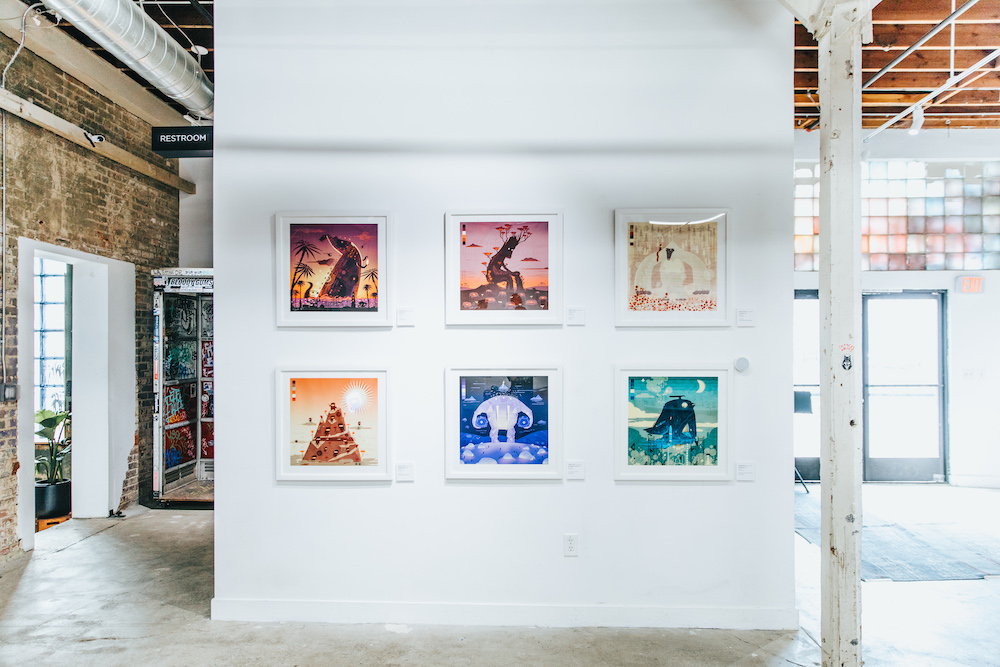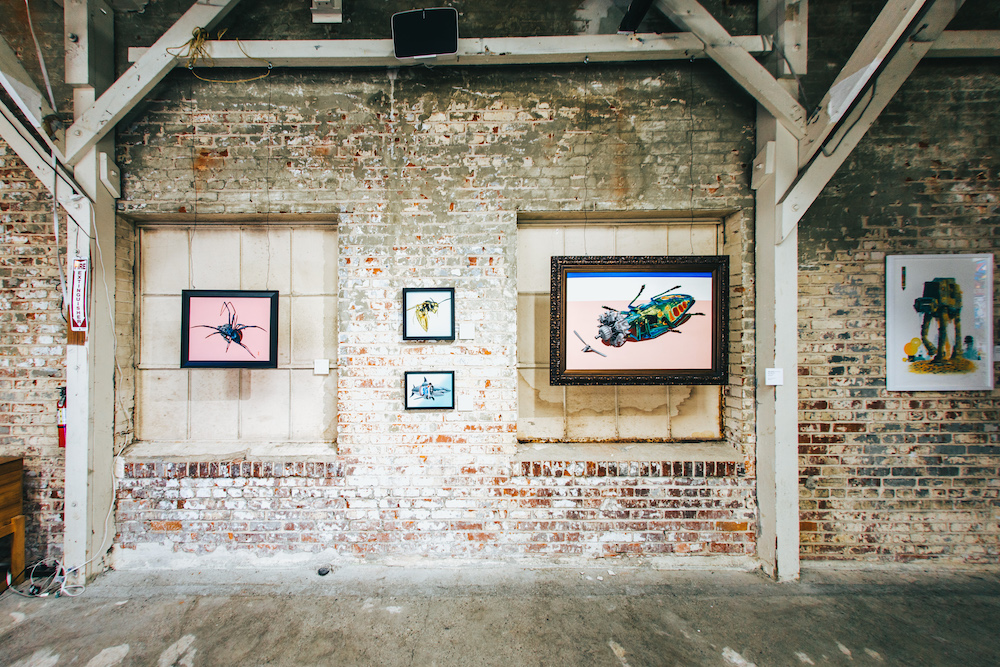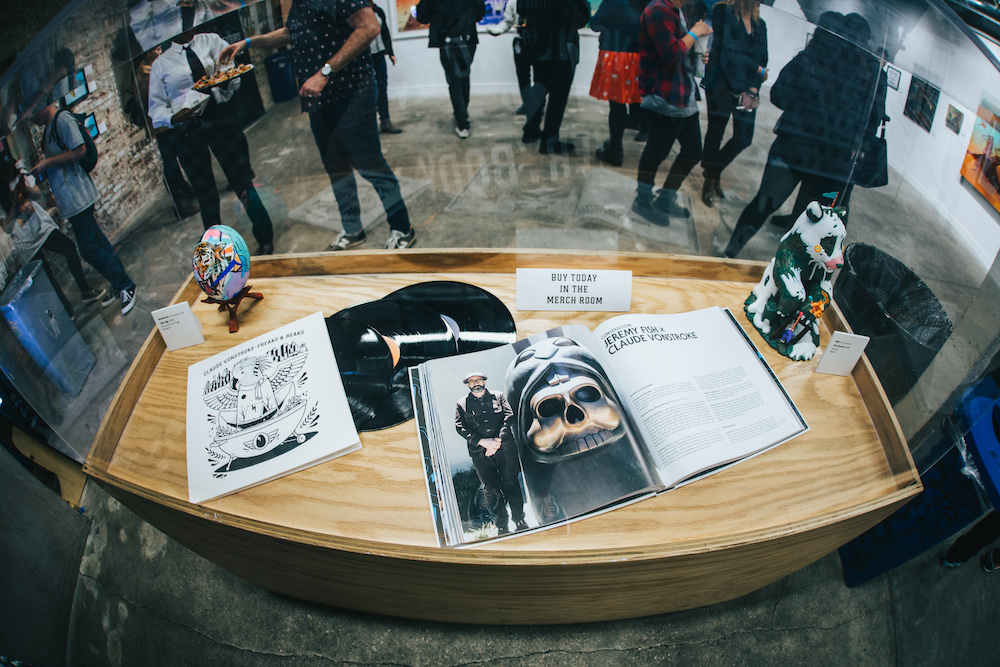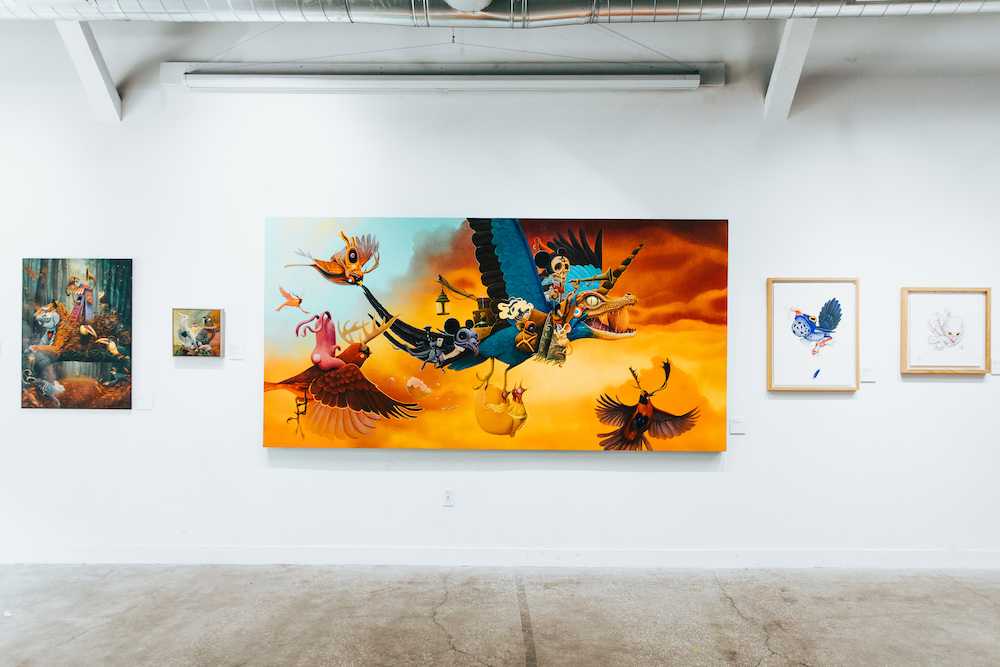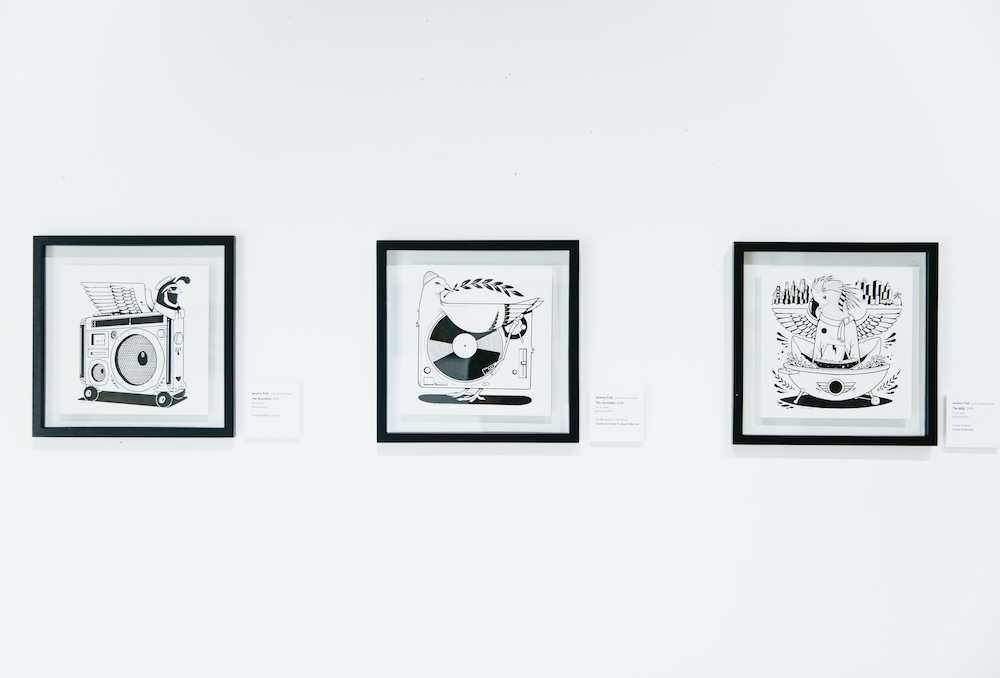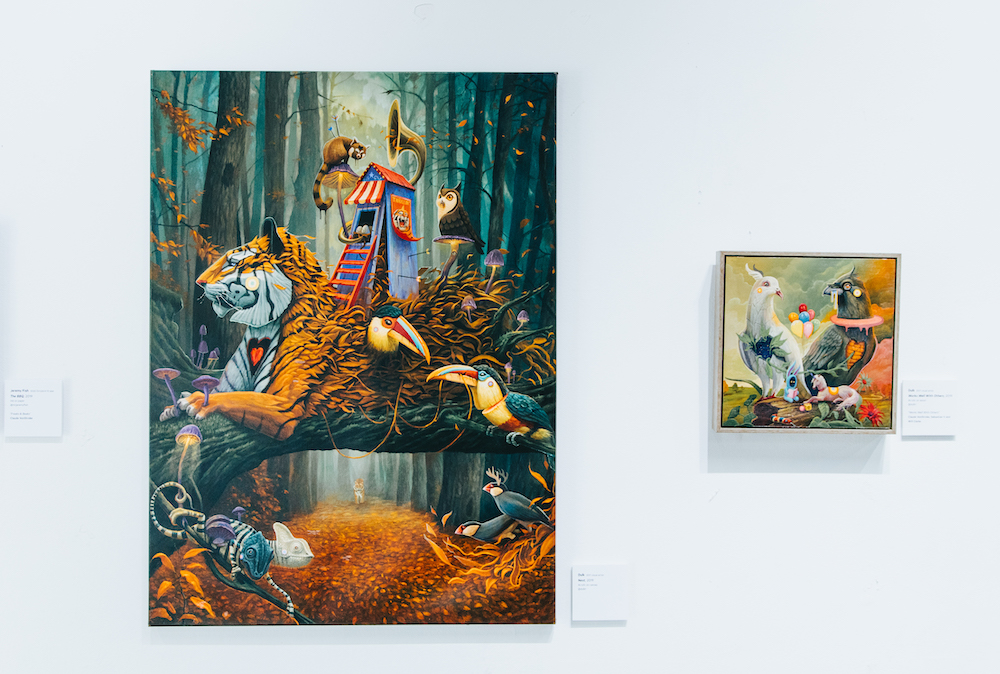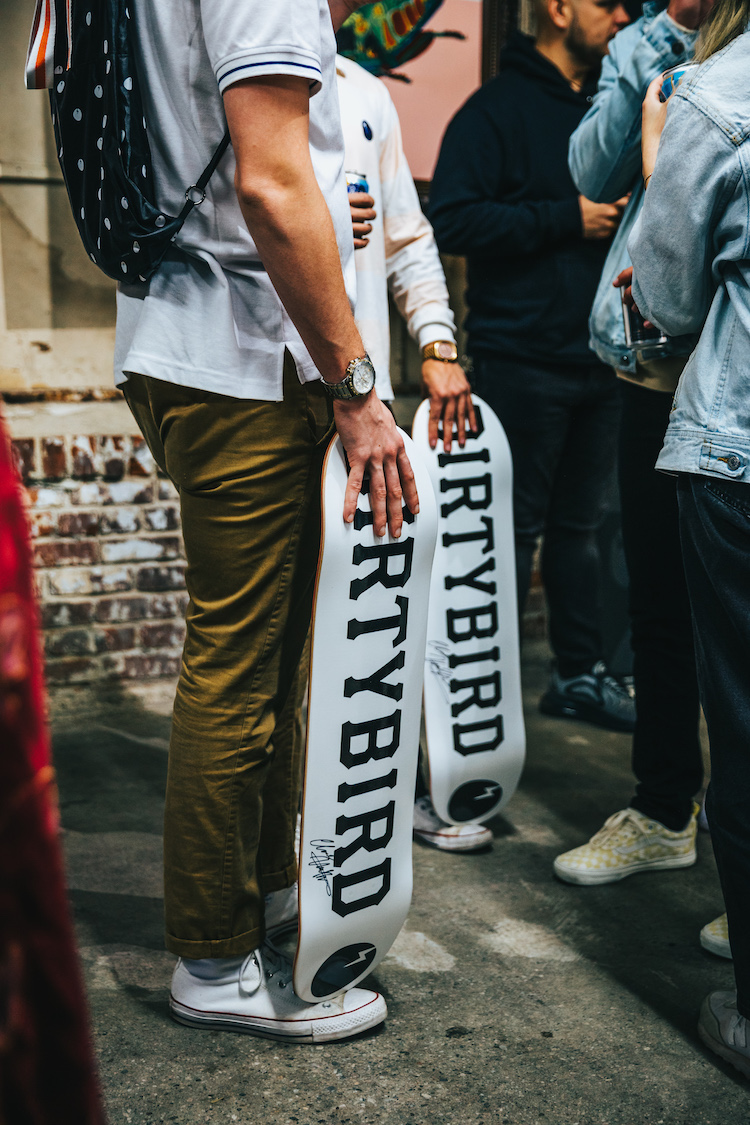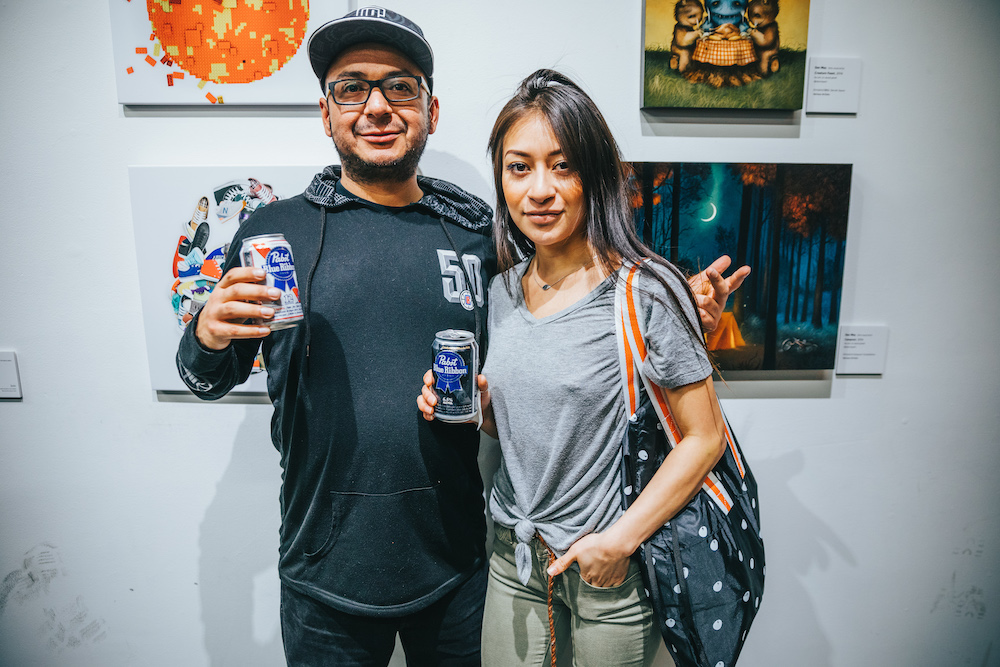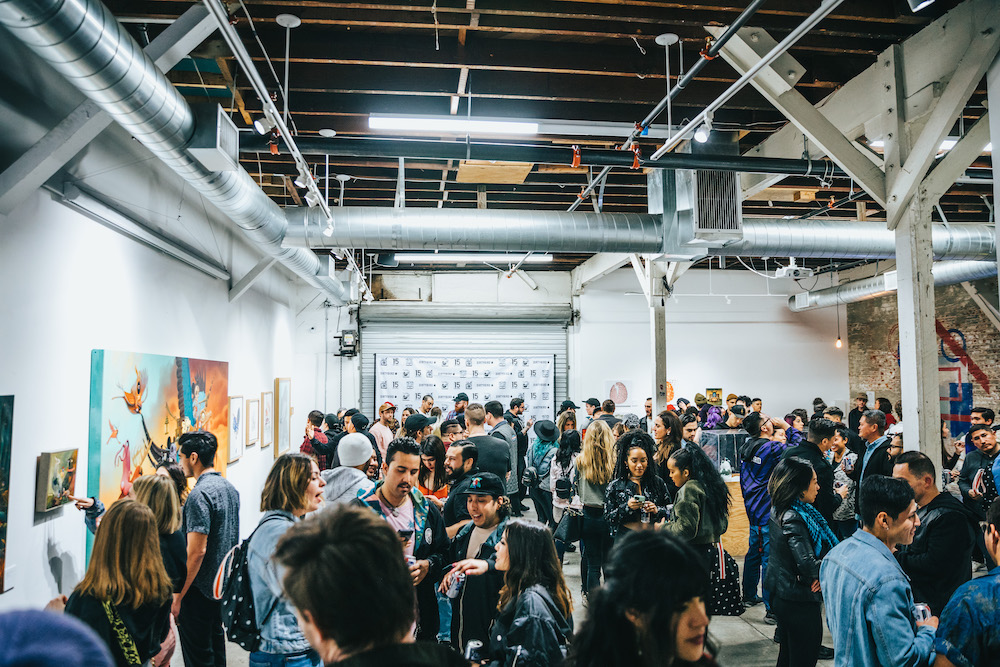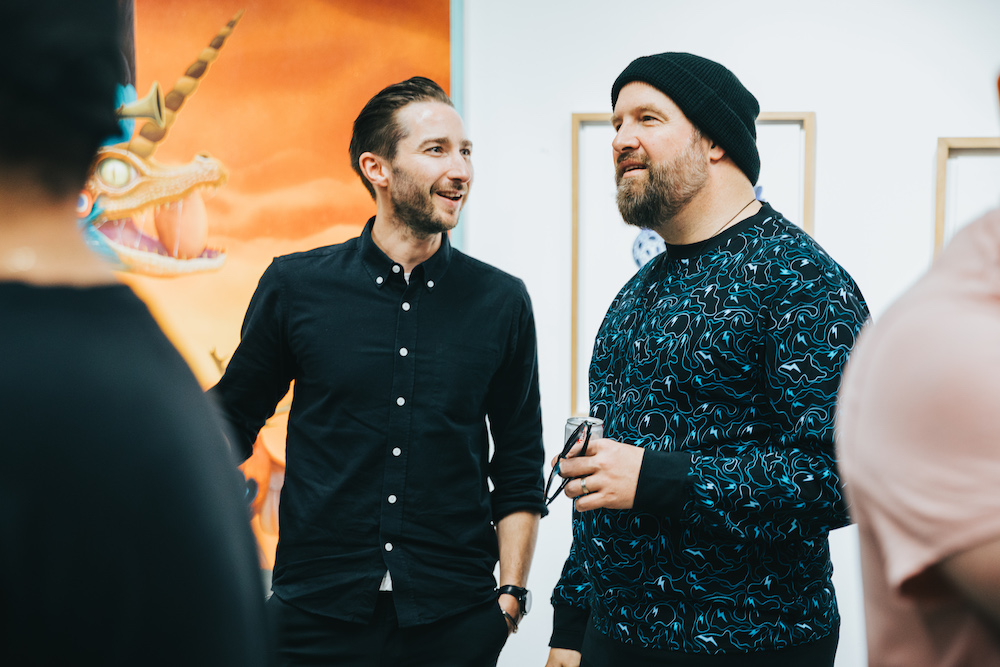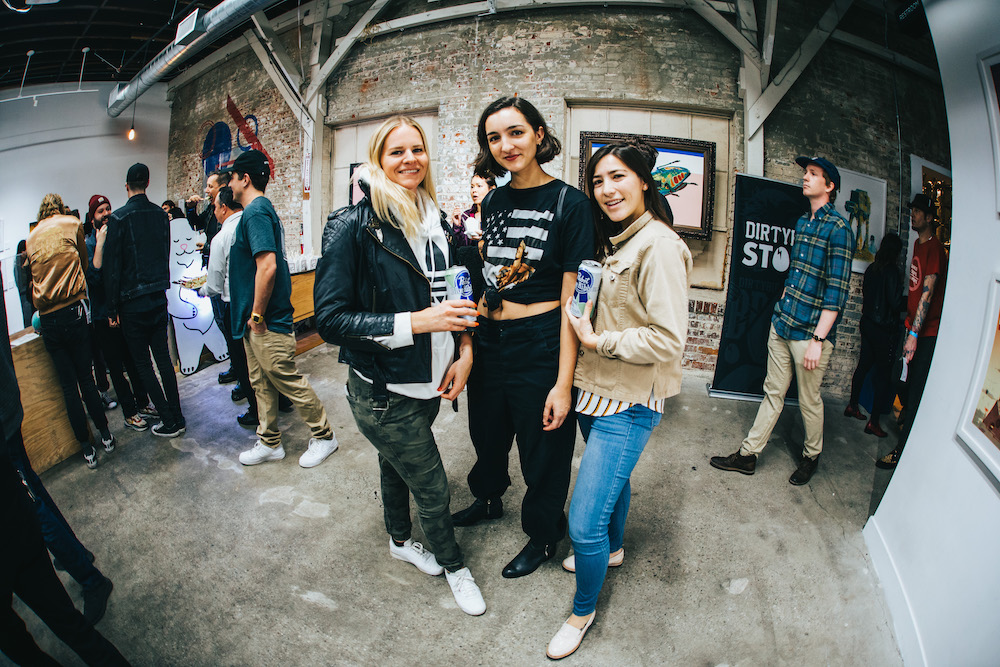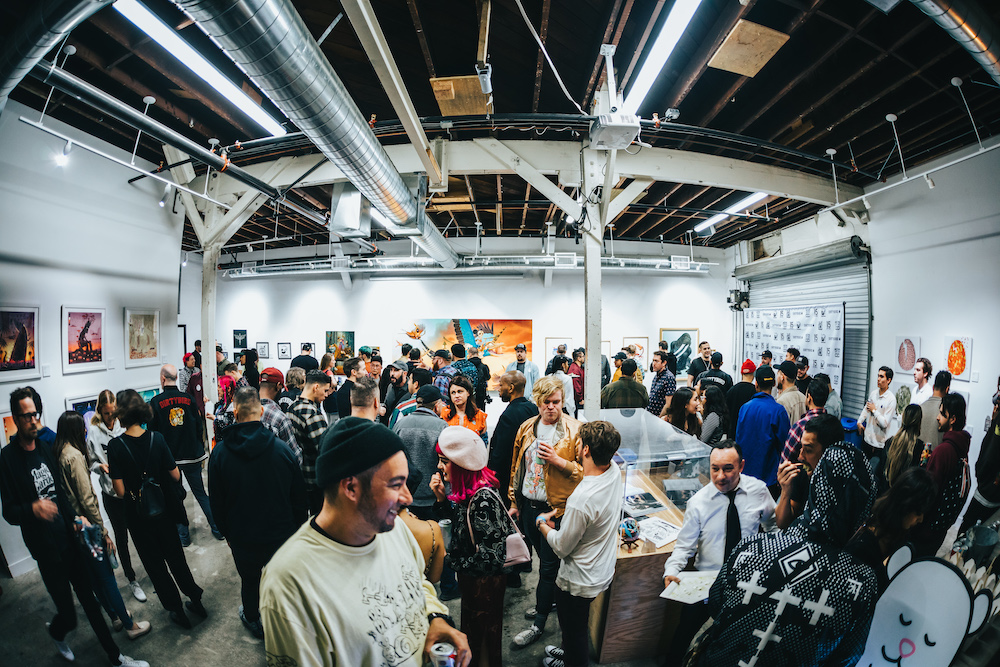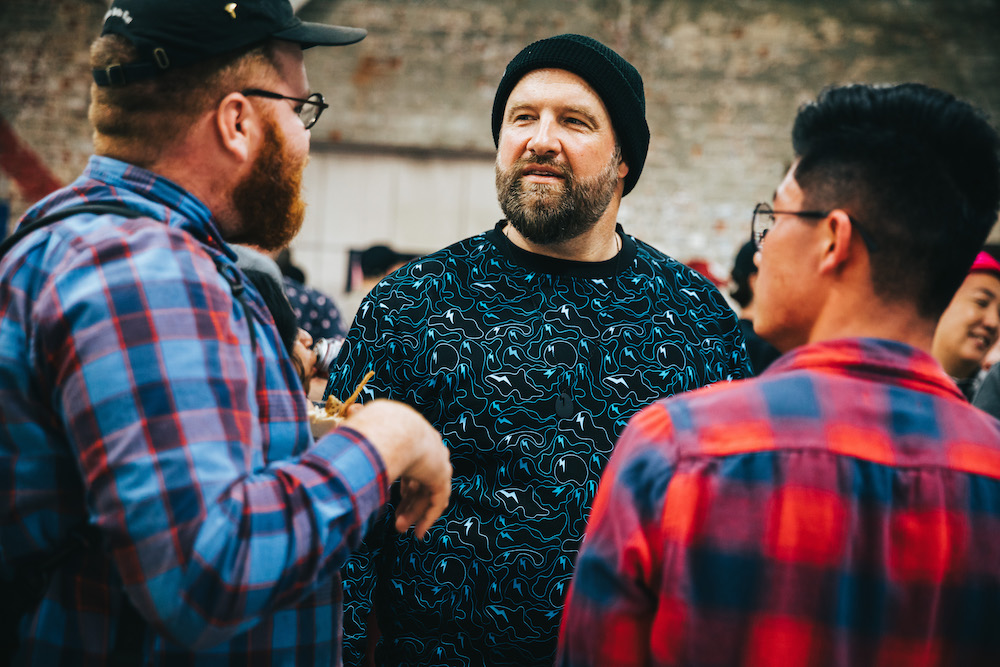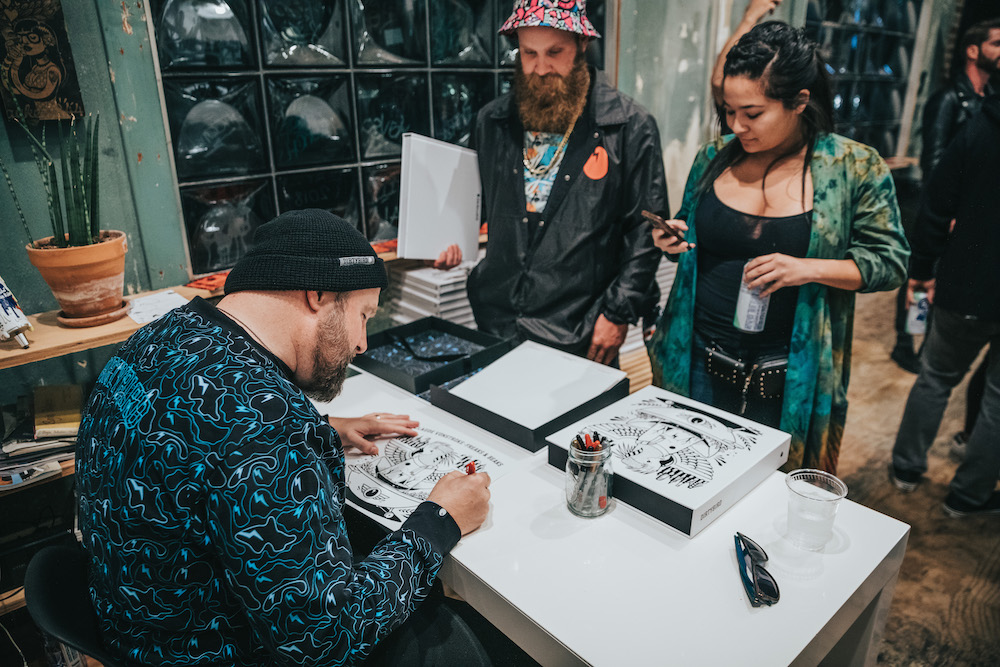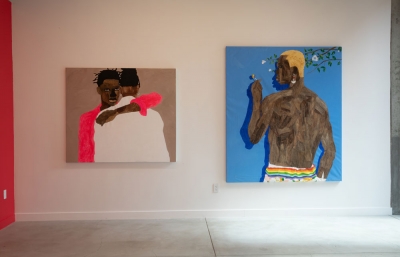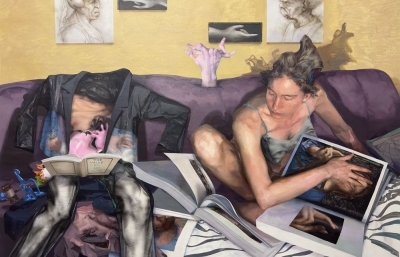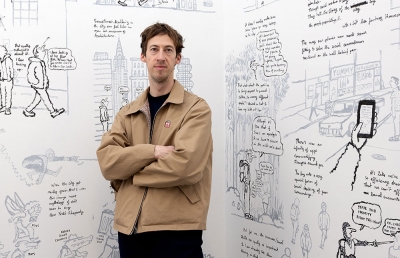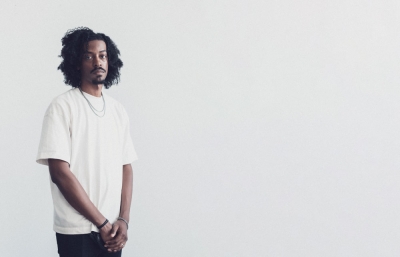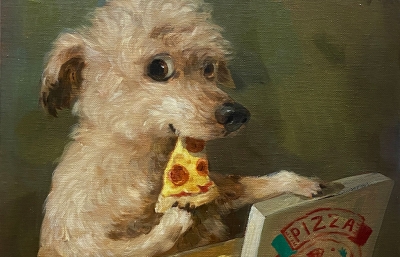Dirtybird Records was a San Francisco startup only 15 years ago, but not one of the tech sort typically associated with Bay Area business. Barclay Crenshaw, also known as DJ Claude VonStroke, has since built a label where clothing, merch, art and large scale events play as much of a role in the success of the brand as the music itself.
We had the opportunity to meet up with Crenshaw a few weeks ago at the first Dirtybird Art Show held at 1700 Naud, the experiential brand home of Pabst Blue Ribbon in LA. The event also served as the album release party for Barclay’s newest record, and coinciding with the Jeremy Fish-designed book release commemorating the first 15 Years of Dirtybird Records.

Over the course of just a few hours, it became apparent that Crenshaw never stops working. He’s the kind of person who listens to every single demo that gets submitted, finding ways to remove roadblocks for everyone involved. This extends to the artists Dirtybird signs up for yearlong commitments; meaning a long-term consistent paying gig versus piecemeal assignments at random. Robert Bowen, last year’s resident artist, mentioned it was one of the best brands he’s ever worked with, and that creative direction was as loose as possible, allowing him to go in any direction he wanted throughout the year.
Here are some excerpts from our conversation throughout the evening.
Mike Stalter: What’s the secret to keeping the doors open for 15 years?
Barclay Crenshaw: Being flexible and willing to change into many different companies and not just a record label. Always signing brand new talent and not getting hung up by people who want everything to be the same forever, while still trying to respect some of the original champions of the label. But most importantly treating the fans as if they are also the owners and giving them a voice in our process.
When did you really start to have an affinity for lowbrow, pop surrealist artwork? Was there a particular piece, or artist that really drew you into this world?
For sure it was Jeremy Fish at Upper Playground at their shop in the Lower Haight in San Francisco. This is the neighborhood where Dirtybird started and this was the key shop where we all bought clothes. I had never seen this kind of art before, and it was fascinating to me. I couldn’t afford to buy any real art for many years so I just bought the t-shirts and started checking out other artists who were similar or even very different but still with the same kind of vibe.

Music and visual art have always been intertwined, with record sleeves and album art. As a label owner, how important is visual aesthetic to your record label brand?
When we were starting out I had to do all the artwork myself so it was total garbage but that was all I could afford. As soon as we started making any sort of profit it was one of the first things I changed. It’s very important to me to have a visual identity and to also show that we care about artwork. I know a ton of labels that just change the color of their logo and put out single after single. What does that tell your audience when you do that? In my opinion it sends the message that your music is cookie-cutter template music, just like the artwork. It’s just the same song over and over and maybe you changed the color of the background, but its generic music just like the art. I don’t want to send that message because I believe we make special music that deserves special art.
You've worked with visual artists from across the globe, enlisting them for year long residences to create all the art for the label. How do you find these artists? What makes them a fit for Dirtybird? And what's that initial conversation like?
Each artist we hire is on for a full year of releases. I also sometimes hire an artist to do my own individual Claude VonStroke or Barclay Crenshaw art campaigns for touring on releases which are smaller projects. I find the artists in every way possible. This year’s artist I found by seeing a mural at Denver Crush and taking a photo. Last year’s artist I found on Instagram. The fit for Dirtybird is just like the music. It’s just a simple question: do I like it? Because the images go down to tiny Internet square jpegs that sometimes I will take that into account when choosing the artist because very intricate small detail art can get lost at that size. The conversation with the artists is usually with Deron Delgado, my label manager—he sends the proposal which is very artist friendly and we simply see if they are interested. Sometimes I have to go through three or 4 names before someone wants to do it and sometimes it's the first person.
And the idea of committing for a full year, has that been helpful in sourcing talent or what’s the reception to that been?
I think it’s helpful especially in art and music to know that you have a guaranteed paycheck coming all year long. The one way I think it might not be helpful is the commitment to doing 15-18 pieces. That can be daunting to some artists who are maybe not as fast. But even then we try to license some art they already completed and we try to make it work with their schedule.

Dirtybird has deep roots in San Francisco. You enlisted Jeremy Fish to help design your 15th anniversary book cover and all your Freaks & Beaks album art. How important was it for you to have a Bay Area artist be involved for the milestone anniversary, and what led you to Jeremy?
As I said at the start, Jeremy Fish was the first artist that inspired me to check out the scene. I started out in Oakland and then Lower Haight— fresh out of my Chevy Caprice that I drove from Detroit. It actually took me 15 years to be able to afford to work with Jeremy but I will say it was worth every penny. I don’t even consider it expensive. To me, I always wanted Jeremy Fish to do something on Dirtybird and how can you put a price on emotions? The question comes up every day no matter what I'm doing: does this make me feel good? Does this make other people feel good? If the answer is yes and we are blessed enough to be able to afford it, we have to do it.
You've amassed a pretty amazing collection of your own at this point. How many pieces do you have now? What are some of your favorites?
I'm not sure of the exact count but I always buy at least one piece from every artist we hire for Dirtybird. I think we have 25+ pieces in our house and office and they aren’t all from the record label. My favorite piece is the massive Dulk in our living room. He came and lived with my family for 11 days from Valencia, Spain. It’s the largest interior (meaning not a mural) painting he’s ever done. My kids were fascinated by his process and they asked him so many questions while they imagined the storyline about everything going on in the wildy fantastic painting. He cooked Paella for us and he even met my parents. I think it's something special that my family will always remember.
What's been the weirdest experience you've had with an artist while working with them on the label or when you approached them?
To be honest everyone has been great. It seems like we would have run into a few nutty folks by now but everyone has been incredibly professional and delivered their art on time. We have been extremely lucky in that regard.

Events are a big part of the business, as well as the overall Dirtybird fan experience. How did that come about in terms of deciding to orchestrate them and how have they grown?
The events continue to grow because that is an experience that cannot be digitized or replicated by the Internet (yet.) Early on we saw that making underground house music without any vocals is no way to make a living so we expanded into clothing and events to stay viable. We include the fans and we connect so closely to the fans daily because it feels good and in the end we are doing it for them. The music and the events are for everyone to celebrate the community.
What’s in store to continue the celebration this year?
We have 5 city Dirtybird BBQ tours. Then we have a new 2 day festival in LA based on my radio show called The Birdhouse. We also have that same festival in the Fall in Chicago. We have a brand new festival in Orlando and then our huge flagship Bay Area festival - Dirtybird Campout - which is basically the epicenter of Dirtybird. Everything we love and believe in and have fun with represents itself at Dirtybird Campout.
What’s the best piece of advice you ever received, solicited or otherwise?
Derrick Carter, the famous Chicago house DJm told mem, "You gotta work hard, but then when you think you made it you gotta work even harder. And then when you get to where you’re going you gotta work even harder than that."
To see the unique album art and back catalog of Dirtybird Records, visit https://dirtybirdrecords.com/pages/music

